HARRY BERTOIA (1915-1978)

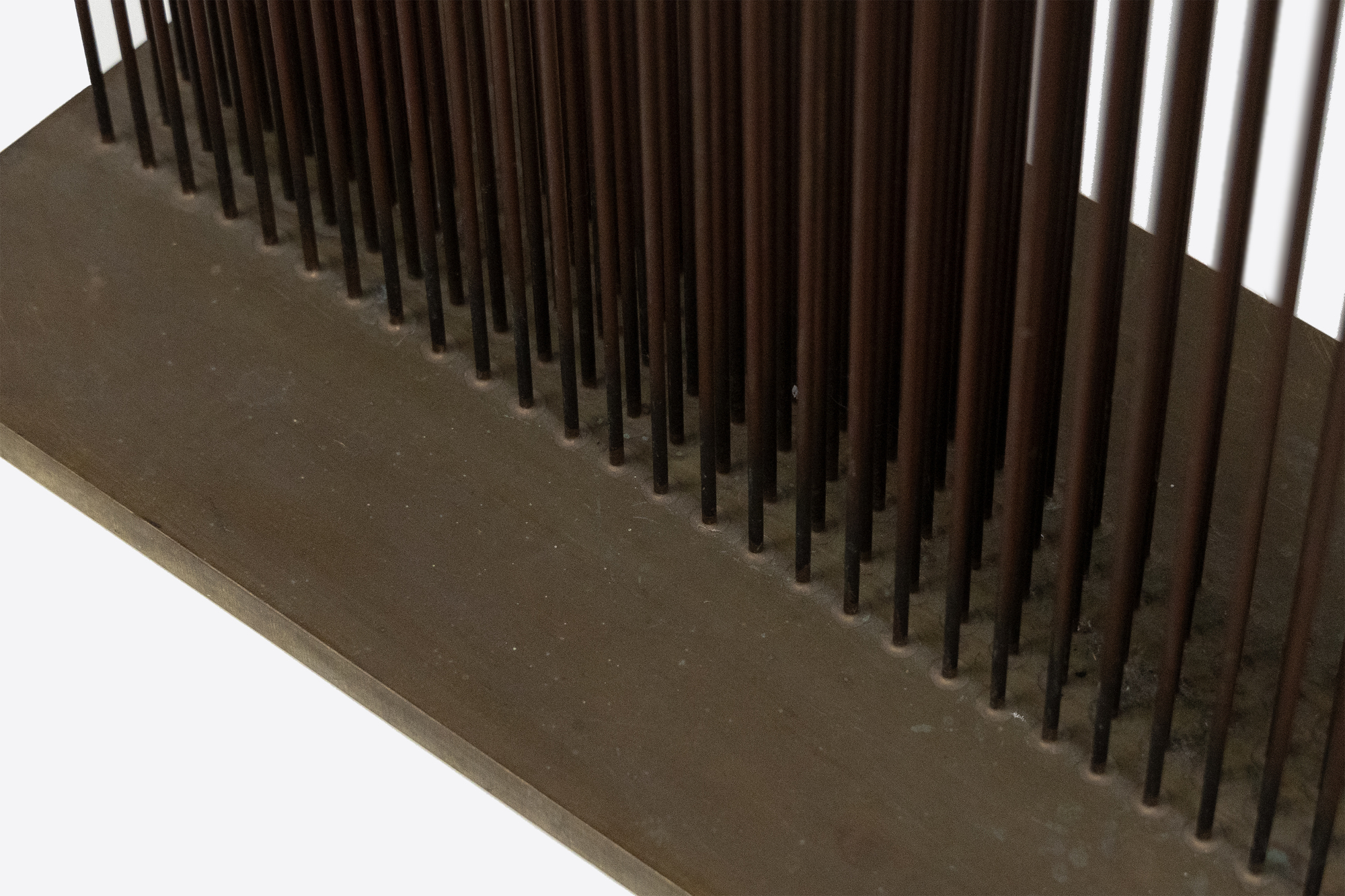
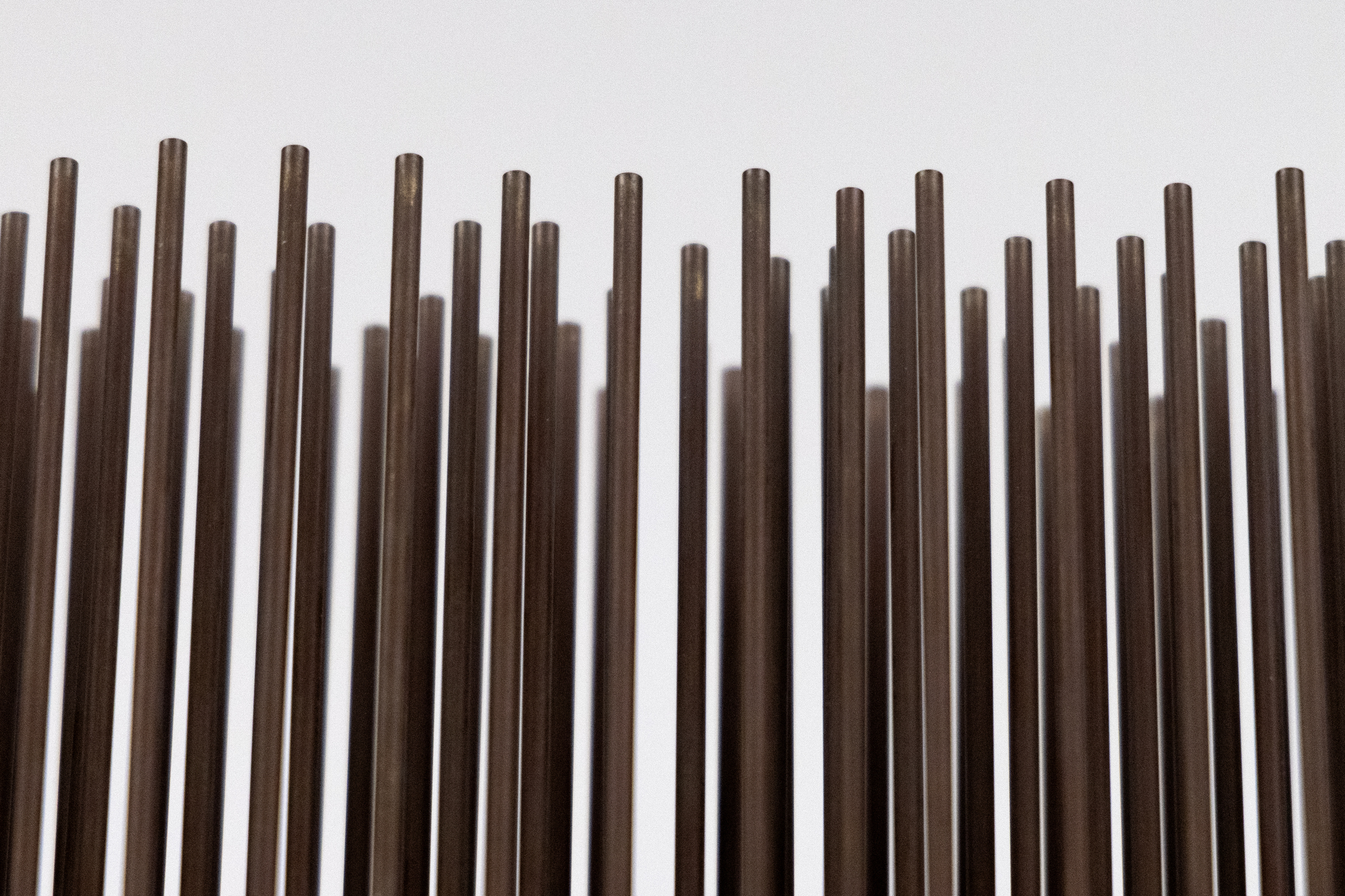
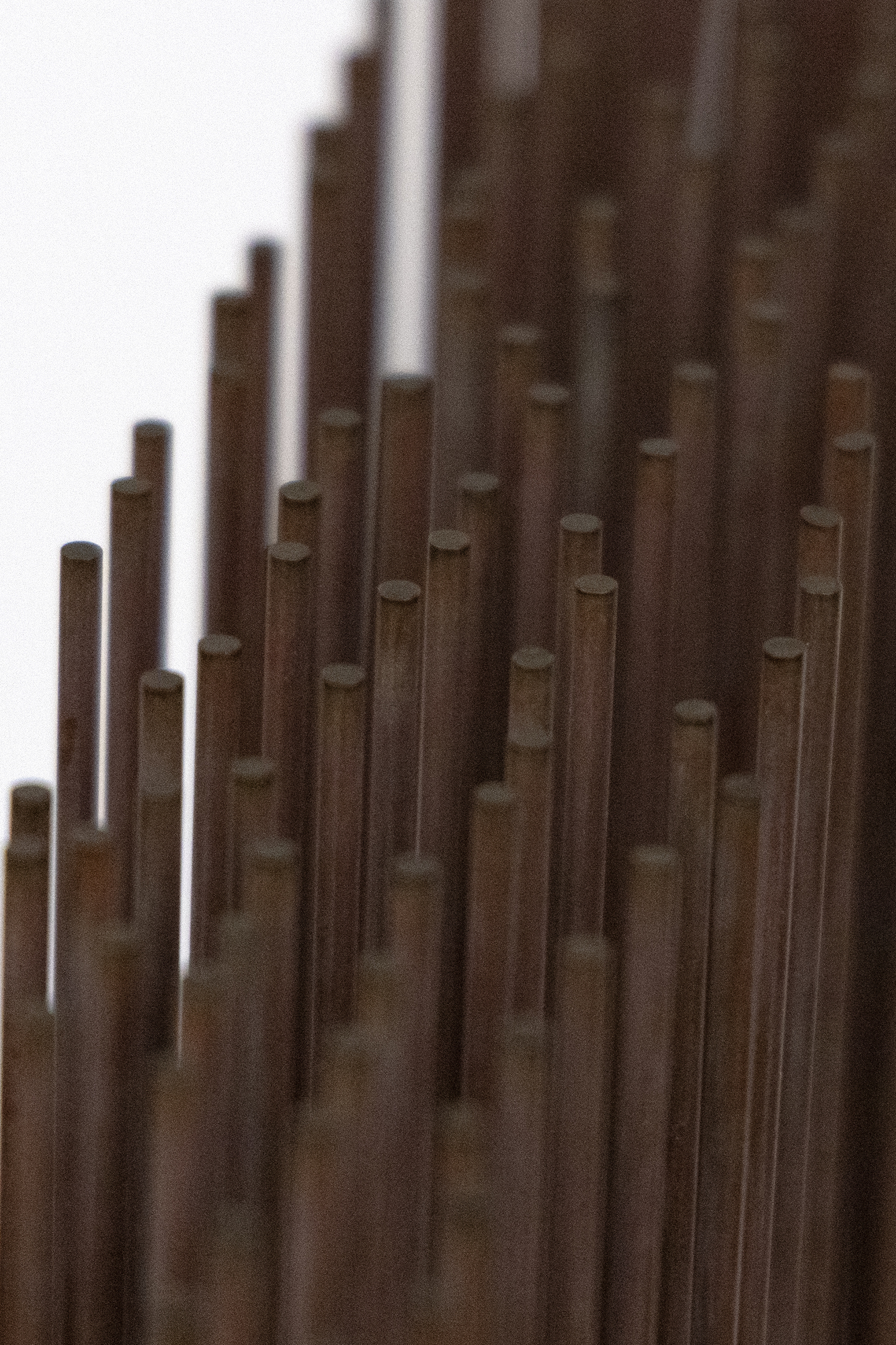
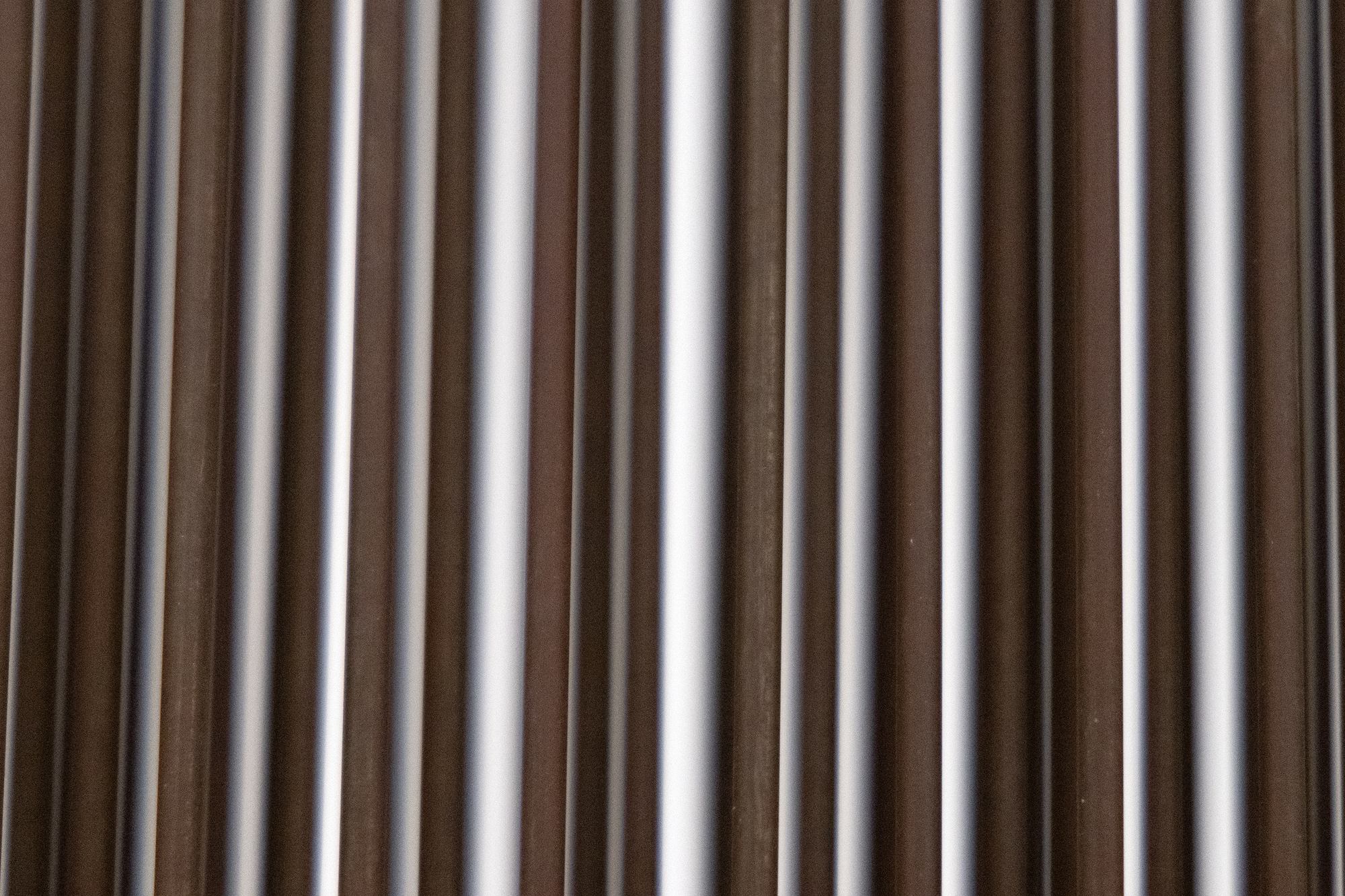
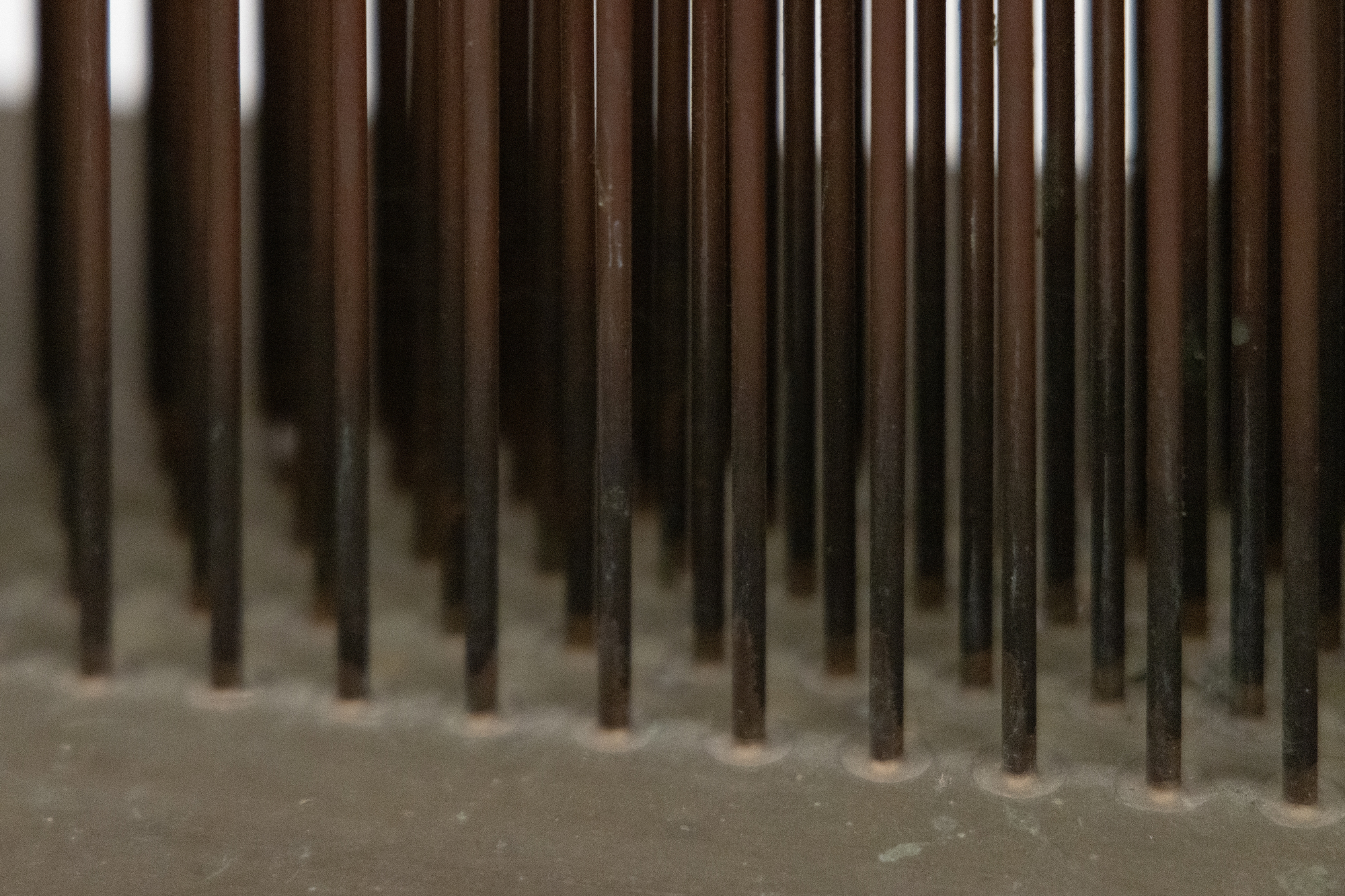
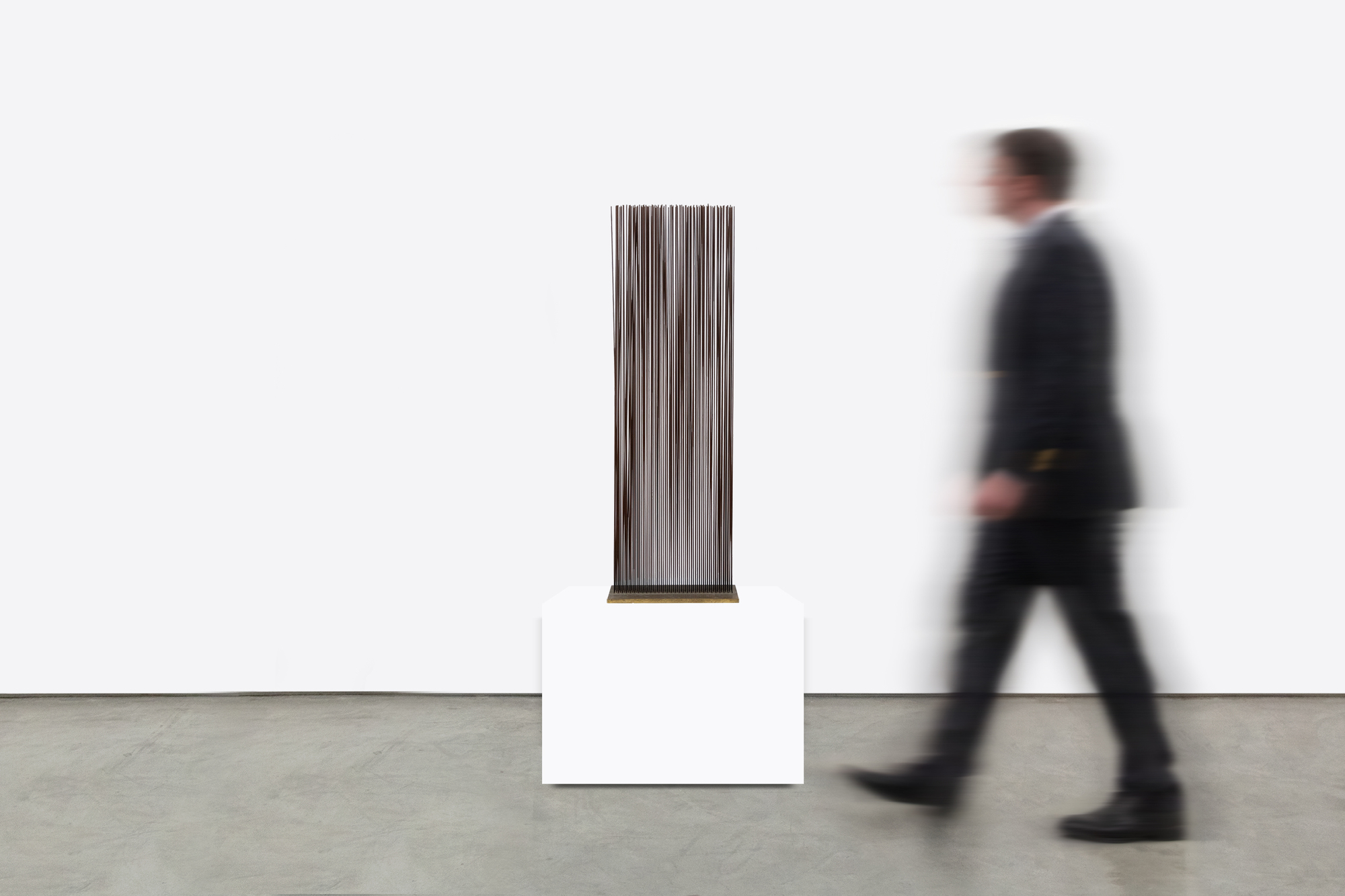
Provenance
Collection privéeLa sculpture "Sonambient" actuelle est un rideau de dents fines de 48 pouces de haut. Une fois activé, il devient un mur sonore de 15 3/4 pouces de long et de 8 pouces de profondeur. Cinq rangées de dents étroites sont disposées en quinconce, alternant entre 30 et 29 dents qui, une fois activées, se présentent comme un mur de son ondulant. Lorsqu'elles sont touchées ou déplacées par les courants d'air, les tiges produisent un son qui, bien que métallique, ne trahit pas sa source d'inspiration : la connexion sereine que Bertoia a ressentie en observant le doux mouvement ondulatoire des herbes du désert. Comme toujours, cette sculpture de Bertoia invite à participer à l'expérience des formes et des sons changeants, une œuvre participative qui nous demande d'être présents dans l'instant, de nous connecter à travers le temps avec l'objet et son créateur.


